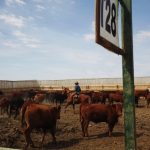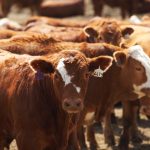Compared to last week, western Canadian yearling prices markets traded $2-$5 higher on average. Calves were quite variable. This was the first week when larger groups of calves were featured on the internet sales. Prices on the internet appeared to be significantly stronger than smaller groups under 10 head moving through auction rings. Feedlot operators […] Read more













